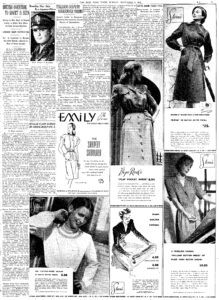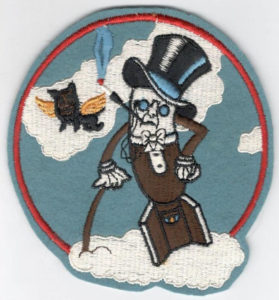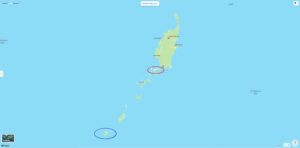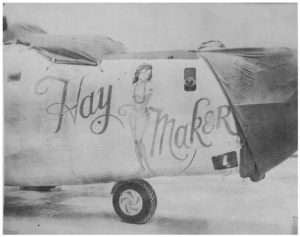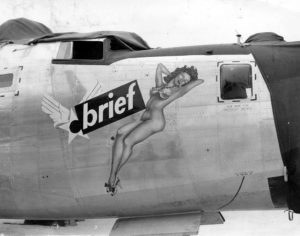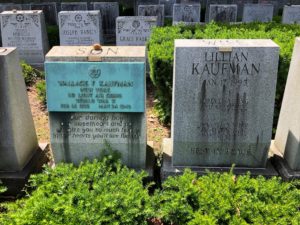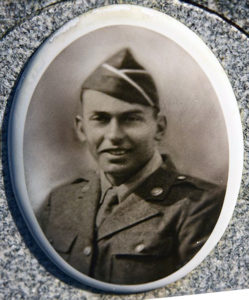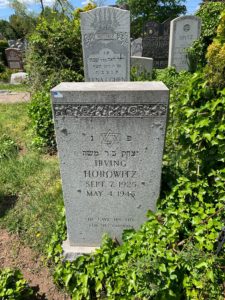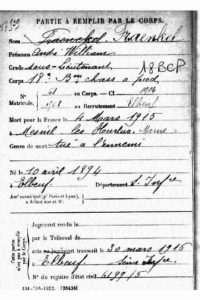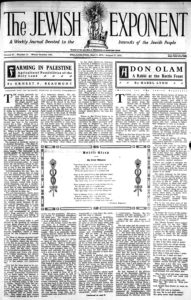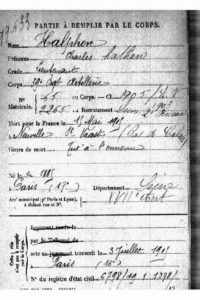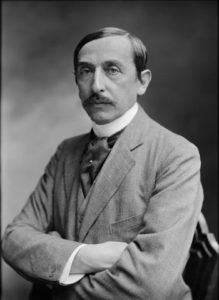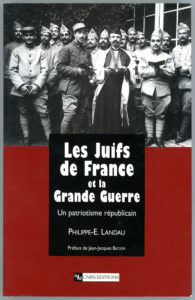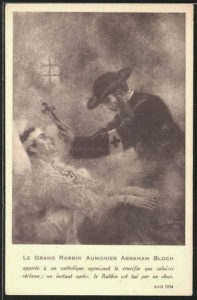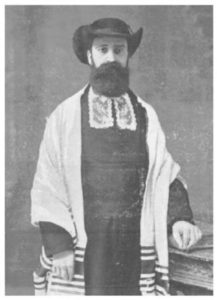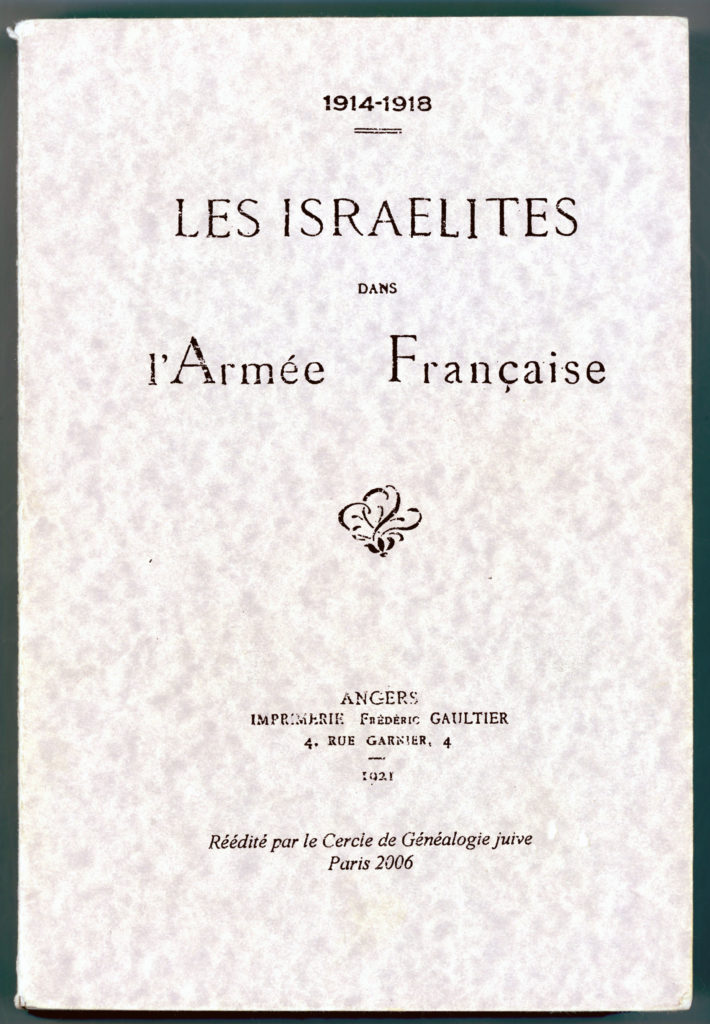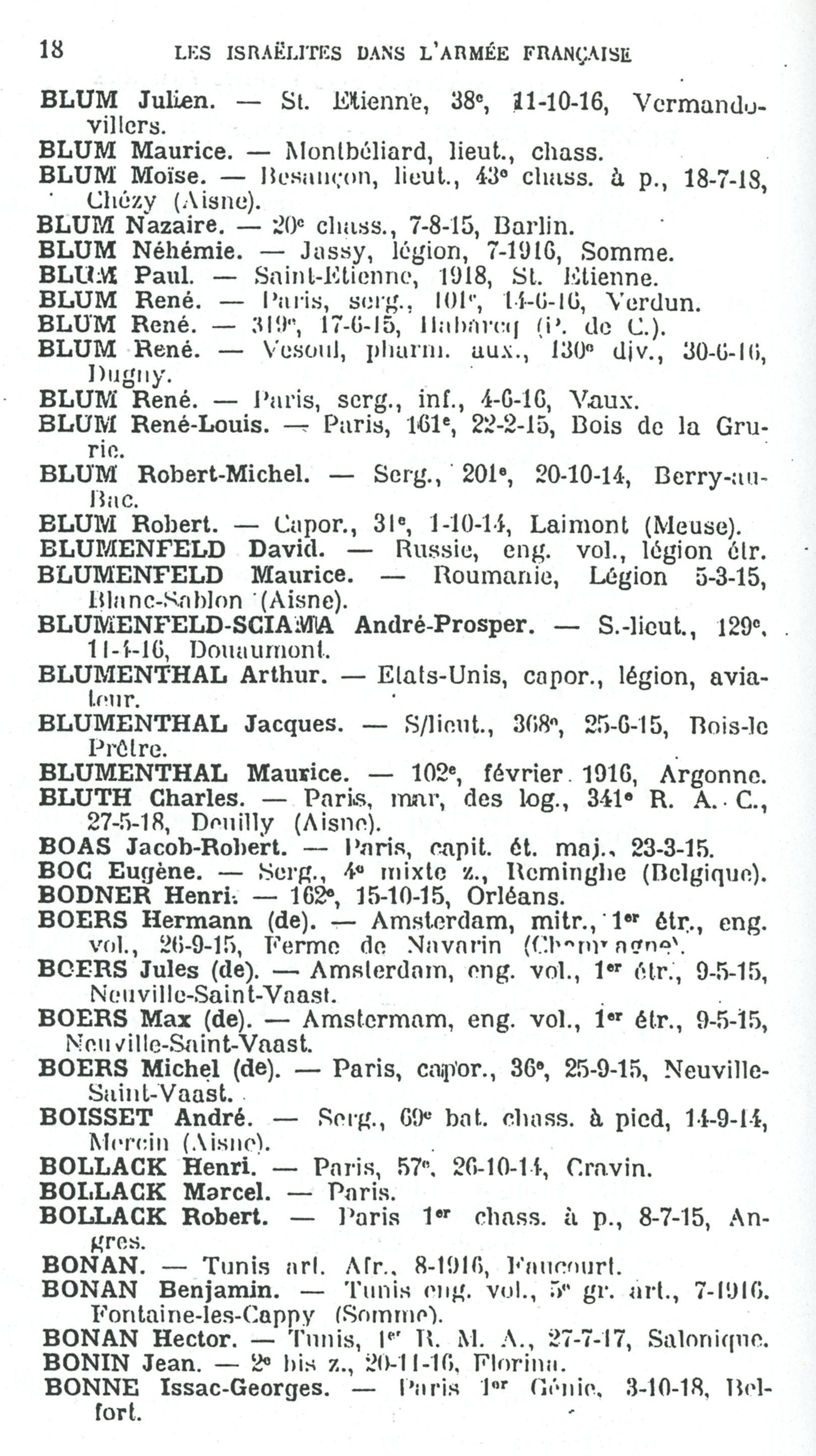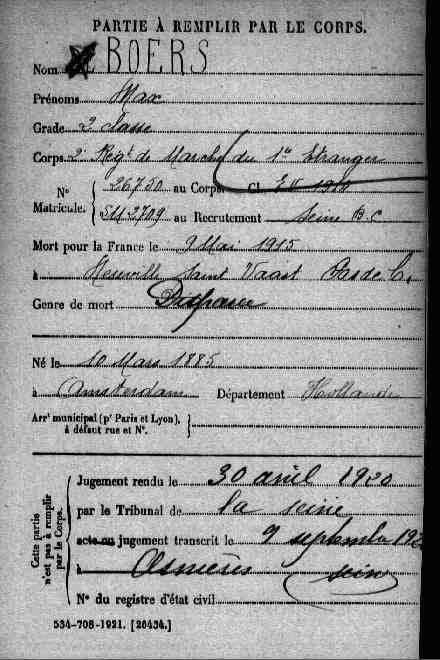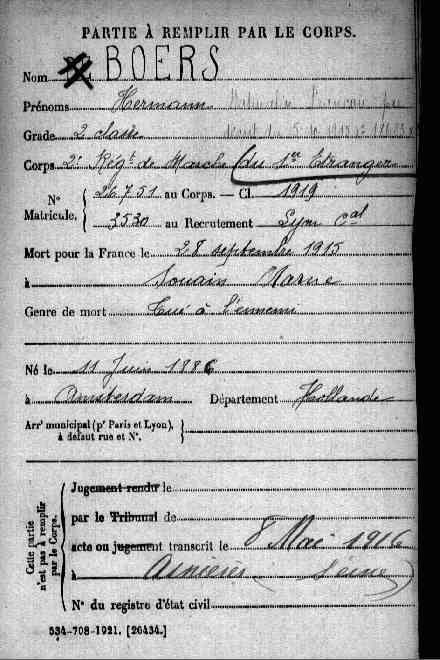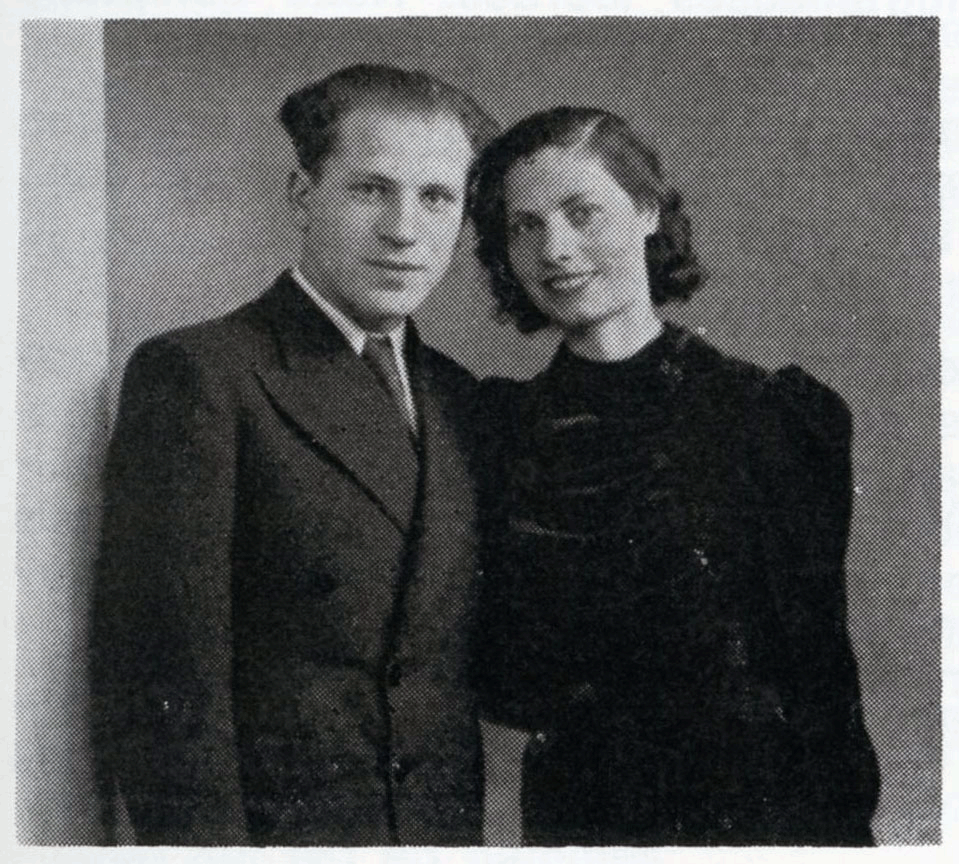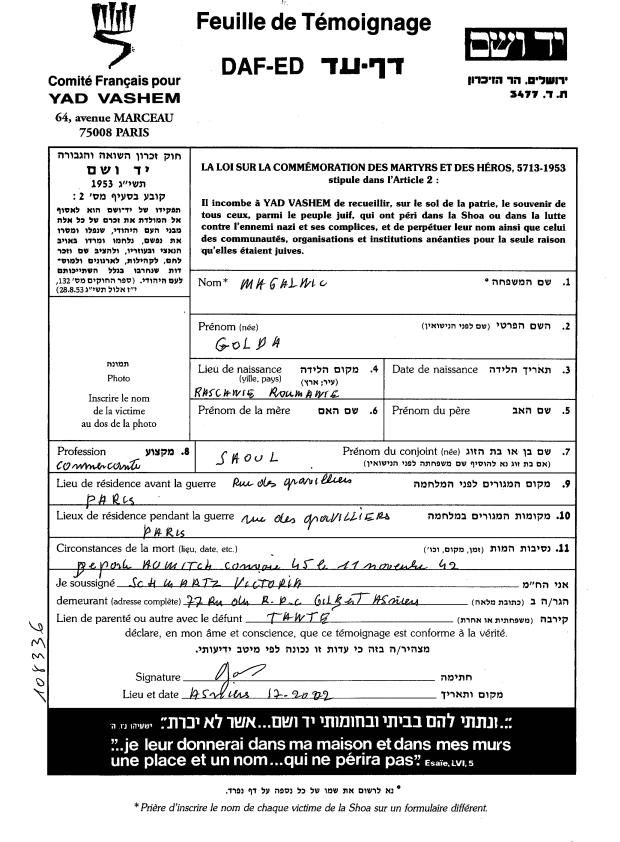“For those who came back there was a cleaning shower and a clean bunk to purge their weariness.
But for those who did not there were many possibilities, all of them brutal and tragic.”
Kevin Herbert, Maximum Effort (1983)
______________________________
“וְגִלְּתָ֚ה הָאָ֙רֶץ֙ אֶת־דָּמֶ֔יהָ וְלֹֽא־תְכַסֶּ֥ה ע֖וֹד עַל־הֲרוּגֶֽיהָ…”
“…and the land shall reveal its blood and it shall no longer conceal its slain ones.” (Isaiah 26:12)
________________________________________
Continuing with my ongoing series of posts about the military service of Jewish soldiers in WW II, “this” post, like other preceding it, concerns Jewish soldiers who were either military casualties (killed, wounded, or missing) or, who received military awards or decorations, for action on a specific calendar date during that conflict. For the purpose of these posts, that calendar date is based on information in news reports or obituaries about Jewish military casualties published in the The New York Times, most such news items appearing in 1945. As such, the above-mentioned “date” which serves as the criterion for these posts is the date on which a serviceman was a casualty, when he performed or participated in action for which he was the recipient of military awards, or, if he was involved in any other significant, news-or-memory-worthy event – rather than the date on which a news item was published in the Times.
In ironic hindsight, the fact that a soldier was a Jew was neither the criterion nor the focus of the Times’ reporting, since the nominal acceptance – let alone an unapologetic and positive assertion! – of Jewish collective identity; Jewish peoplehood – has long been anathema to the animating ideology of the Times. As of 2021, that worldview remains undiminished in intensity and taken-for-granted-acceptance, and will probably persist until the arrival of an informational or sociological “black swan event“.
As for these posts themselves, the order in which they’ve appeared here at TheyWereSoldiers is alphabetical, with servicemen thus far profiled encompassing Navy Hospital Apprentice Stuart E. Adler through Army PFC Harry Kaufman.
And with that, a “new” name makes its appearance: Second Lieutenant Wallace Franklin Kaufman (serial number 0-931082), a B-24 Liberator navigator in the Army Air Force. Born in Brooklyn on February 14, 1922, he was the son of Louis (12/23/88-9/5/78) and Lillian (7/23/98-1/17/95) Kaufman, the family residing at 456 Schenectady Avenue.
____________________
Via Apartments.com, here’s a quite contemporary image of 456 Schenectady Ave. (East Flatbush.)
____________________
More than a nominal record in a Missing Air Crew Report (MACR 14351 to be specific, or the WW II Honor List of Dead and Missing for New York), Lt. Kaufman’s fate is directly associated with a brief newsreel, and a series of photographs, that because of their dramatic, haunting, and terrifying nature, have become etched into the photographic record and popular culture of WW II aviation in particular, and, news coverage of the Second World War, in general.
A member of the 867th Bomb Squadron of the 494th (“Kelly’s Cobras“) Bomb Group, Lt. Kaufman was one of the eleven crew members aboard Brief (44-42058), a B-24M liberator piloted by 2 Lt. Glen R. Custer, when that aircraft was shot down by a direct hit from anti-aircraft fire during a bombardment mission to Koror, in the Palau Islands, on May 4, 1945. The only crewman of Brief to escape (and to even have had a chance to escape) from the mortally damaged bomber, Lt. Kaufman was captured shortly after landing by parachute in – probably – the Ngurumetegol Strait. You can read a succinct and detailed summary about this incident at PacificWrecks.
But, by August 15, when Emperor Hirohito read the Imperial Rescript on the Termination of the War, Lt. Wallace Kaufman was no longer alive: On May 24 – almost three weeks after falling into Japanese captivity – he had been murdered.
____________________
Well, here’s notice of Lt. Kaufman’s death, as published on page 31 of Times on November 4, 1945, almost three months after the war’s end. Notably, three significant aspects of the article are not entirely correct. First, Lt. Kaufman was not personally and immediately captured by Lieutenant Katsuyama and was not the Japanese Lieutenant’s personal prisoner – that’s a real oversimplification. Second, Lt. Katsuyama himself (full rank and name: First Lieutenant Tetsuji Katsuyama) actually acted under orders of Lt. Col. Toshihiko (“Yoshie”) Yajima, who himself was under orders of of Lt. General Sadae Inoue. Third, Lieutenant Katsuyama survived the war. As revealed in late 1947, Lt. Kaysuyama and some comrades concocted a story to the effect that he’d committed suicide, when in reality he went into hiding commencing with the postwar occupation of the Palaus by American forces. He returned to Japan in early 1946 under the name of Mikio Koyama, a Japanese soldier who had actually been killed in battle, the full story only coming to light some time later.
Well, anyway. Here’s the text of the Times’ article…
Second Lieutenant Wallace Franklin Kaufman
Tuesday, February 14, 1922 / 17 Sh’vat 5682
(Friday, May 4, 1945 / 22 Iyyar 5705)
Thursday, May 24, 1945 / 13 Sivan 5705
– .ת. נ. צ. ב. ה –
תהא נפשו צרורה בצרור החיים
____________________
Brooklyn Flier Slain By a Japanese Officer
Second Lieut. Wallace F. Kaufman, Army Air Forces, a former lightweight boxing champion at Brooklyn College, was murdered by the Japanese last May 24 after the B-24 bomber of which he was navigator was struck by enemy anti-aircraft fire and he had parachuted to safety.
Details of the murder were disclosed in a letter received yesterday from the War Department by his parents, Mr. and Mrs. Louis Kaufman of 456 Schenectady Avenue, Brooklyn. Lieutenant Kaufman, who was 23, has been reported missing in action since May 4.
A Japanese, Lieutenant Katsuyama, took the navigator prisoner after the plane was struck near Koro Island, Palau Group of the Caroline Islands. Katsuyama killed his prisoner and later committed hara-kiri to prevent falling into American hands, according to the War Department. The other ten members of the B-24 crew perished in the falling ship.
Born in Brooklyn, Lieutenant Kaufman was graduated from Boys High School and Brooklyn College. He enlisted with the AAF in February, 1943, and was sent overseas last February.
__________
…and here’s page 31 in its fullness, showing the above article’s setting amidst a variety of advertisements. It’s 1946: Life goes on.
__________
The shoulder-patch of the 13th Air Force…
…the emblem of the 494th Bomb Group (“Kelly’s Cobras”) (found at EBay)…
…and, the insignia of the 867th Bomb Squadron, posted to Pinterest by Nikolaos Paliousis.
__________
Between September 3, 1944, and June 23, 1945, the 494th Bomb Group was based at Angaur Island, the southernmost island of the Palau Archipelago, or (more accurately) the Republic of Palau. This Oogle map shows the Palau Islands, with Angaur (outlined in blue), and Koror, (outlined in red). The air distance between the two is a mere and ironic 37 miles.
__________
Here’s the video of the fall of Brief: Available through the War Archives YouTube channel, this luridly titled British Pathé film, “AIR DEATH – B-24 Shot Down In Carolines Raid” shows the last moments of B-24M 44-42058. Uploaded in August of 2011, the video has attained many views.
(I’ve been ambivalent about including the video in this post, but, well, here it is…)
(I t h i n k the sounds of aircraft engines, falling bombs, explosions, and other sounds in the film were actually recorded in real time, but were instead were dubbed into the film prior to its distribution by British Pathé. For example, at 00:40 seconds – for the string of 12 bombs – the sound s e e m s (?) akin to that of a single bomb being dropped from a German Ju-87 dive-bomber.)
From 00:07 to 00:10 seconds, the camera focuses on the 867th Bomb Squadron B-24J Liberator 44-40729, alias Hay Maker, an aircraft which survived the war.
This image of Hay Maker’s nose art, originally for sale through EBay, is from ww2aircraft.netforum… Note that the canvas cover draped over the nose turret is marked with the digits “729”, suggesting that each 494th BG aircraft had its “own” set of protective coverings…
…while this picture appears in Ken Rust’s 7th Air Force Story.
__________
Here’s the utterly un-“pronouned” and un-“woke” nose art of Brief. The aircraft nickname, and, the design of the winged-star symbol, were probably (?!) inspired by the 7th Air Force magazine of that name.
__________
This image of the matzevot of Lt. Kaufman and his mother, at Mount Hebron Cemetery, in Flushing, New York (Block 81, Reference 2, Line PP4, Grave 2, Sam D. Johnson Association Society) at FindAGrave, is by Knickerbocker Chapter DAR, New York, N.Y. The matzeva of his father Louis (cut off in the image) is immediately to the left.
____________________
Via FindAGrave researcher Chuck, this image shows the collective grave of Brief’s crew. The location? Long Island National Cemetery, in Farmingdale, New York- Section J, Grave 13630. Listed alphabetically below the image (neither by crew position nor rank!) are the names, serial numbers, home towns or cities of residence, and crew positions of the ten. The group burial took place on August 31, 1949.
Sgt. Floyd Collins Bennett, 14185619 – Blue Mountain, Ms. – Passenger
2 Lt. Irving R. Brown, 0-778710 – Detroit, Mi. – Co-Pilot
2 Lt. Glen Ruben Custer, 0-2058730 – Mo. / San Diego, Ca. – Pilot
2 Lt. Norbert J. Giese, 0-929814 – Chicago, Il. – Bombardier
Sgt. Richard E. Grimes, 32974352 – Mahopac, N.Y. – Flight Engineer
Cpl. Albin Rynkiewicz, 4205866 – Nanticoke, Pa. – Gunner (Tail)
Cpl. Robert Neil Shillenn, 33576063 – Clearfield, Pa. – Gunner (Ball Turret)
T/Sgt. James F. Tenney, 32677148 – Oswego County, N.Y. – Radio Operator
Cpl. Irving Topp, 12177268 – Brooklyn, N.Y. – Gunner (Dorsal Turret)
Cpl. Victor B. Wilson, 13195222 – Dunmore, Pa. – Gunner (Nose Turret)
____________________
News articles about Lt. Kaufman appeared in the following publications on these dates…
Brooklyn Eagle – 11/6/45, 4/25/46, 10/29/49
New York Times (Casualty Lists) – 7/4/45, 8/29/45
New York Times (News Articles) – 11/4/45, 11/21/45, 7/16/62
New York Times (Obituary Section – “In Memoriam”) 2/14/46, 5/24/46
American Jews in World War II – 360
Nearly two years later, Associated Press news articles pertaining to the trial and sentencing of Lt. Katsuyama appeared in the national news media on December 5, 1947. (As for the postwar fate of Lt. Col. Toshihiko Yajima and Lt. General Sadae Inoue, I have no further information.) There, however, the story did not end: In July of 1962 news relating to Tetsuji Katsuyama, no longer a lieutenant and having been released from prison some years before, again appeared in the news media. This time, the news pertained to Mrs. Anna Topp’s (mother of Cpl. Irving Topp) continuing search for definitive information about her son’s fate.
____________________
Lt. Kaufman’s fate paralleled that of the overwhelming majority of Allied aviators who were captured in Pacific islands occupied by Japanese military forces, and, that of approximately 47 per cent of the Allied airmen captured after having been shot down during combat missions to the Japanese Home Islands, as determined through the dedicated, remarkably thorough, and above all conscientious research and analysis of the late Tōru Fukubayahsi of POW Research Network Japan. This manner of treatment of aviator POWs commenced with that of the eight airmen captured after the Doolittle Raid on April 18, 1942, and continued from 1944 through 1945, even after the Emperor’s broadcast on August 15, of which the fate of this crew is only one example.
In terms of the number of Allied aviators taken captive by the Japanese, during combat missions during which they specifically served as air crew members in any capacity (as opposed to having been captured early in the war during in “ground action” ((for lack of a better phrase)) – for example, during the fall of Singapore, or, the Philippines), who survived as POWs, I’ve determined that 664 of these men lived to see the war’s end.
Breakdown by nation and air arm follows:
United States
United States Army Air Force – 498
United States Navy – 130
United States Marine Corps – 6
American Volunteer Group – 3
Australia
Royal Australian Air Force – 8
Canada
Royal Canadian Air Force – 7
Netherlands
Netherlands East Indies Air Force – 1
New Zealand
Royal New Zealand Air Force – 1
England
Royal Air Force – 10
Parsing the total of 662 by the aircraft they’d been fly-“ing” (or, flying “in”) when captured, the numbers are the following:
British Commonwealth
Beaufighter – 2
Beaufort – 2
Blenheim – 6
Mohawk – 1
Liberator – 2
Catalina – 6
United States Army Air Force
A-24 Banshee – 1
A-36 Invader – 4
B-17 Flying Fortress – 11
B-24 Liberator – 113
B-25 Mitchell – 40
The total of 40 includes 1 airman from the NEIAF, Sgt. Van Burg of No. 18 Squadron.
B-26 Marauder – 2
B-29 Superfortress – 258
Three B-29 crews (33 men of the 258) survived intact:
1 Lt. John B. Boynton, 6th Bomb Group, 24th Bomb Squadron, B-29 42-24759, 15 // Blind Date / Lady’s Delight, May 23, 1945 (MACR 14482) – 11 crew members; Mission to Tokyo
1 Lt. William C. Grounds, 6th Bomb Group, 40th Bomb Squadron, B-29 42-24916, 54 // The Peacemaker, March 28, 1945 (MACR 13465) – 11 crew members; Mine Laying Mission to Minefield “Mike”
Capt. Robert C. Shanks, Jr., 40th Bomb Group, 45th Bomb Squadron, B-29 42-24574, 293, December 14, 1944 (MACR 10376) – 11 crew members; Mission to Bangkok
C-46 Commando – 10
Includes one fully intact crew:
Capt. Frank E. Cowart, Air Transport Command, 30th Transport Group, C-46 41-12294, December 27, 1943 (MACR 1555) – 4 crew members; Mission – cargo flight from Mohanbari, India, to Chungking (Chongqing), China; crew parachuted 2 miles from Canton, China
P-38 Lightning – 13
P-40 Warhawk – 14
P-47 Thunderbolt – 7
P-51 Mustang – 23
F-4 Lightning – 1
F-5 Lightning – 1
F-6 Mustang – 1
Glider – 1
L-5 Sentinel – 1
OA-10A Catalina – 1
United States Navy / United States Marine Corps
F4U Corsair – 8
United States Navy
F4F Wildcat – 2
FG-1D Corsair – 3
F6F Hellcat – 18
PB4Y Liberator – 24
PBY Coronado – 16
SB2C Helldiver – 30
SBW Helldiver – 1
SBD Dauntless – 3
TBD Devastator – 6
TBF Avenger – 16
TBM Avenger – 16
____________________
So, in light of all the above, the basis of this post is the calendar date of May 4, 1945 (not May 24, the date of Lt. Kaufman’s murder), for in essence and fact, given Japan’s WW II-era cultural, ideological, and racial attitudes concerning enemy military captives (and captive enemy airmen, in particular), Lt. Kaufman’s story was tragically predetermined the moment he took to his parachute, even as the broken Brief and her ten crewmen fell towards the island of Koror.
Yet, more than the events pertaining to the immediacy of Lt. Kaufman’s fate, this story, especially its postwar aspects, is part of a far larger whole. It is a reflection (one of many, many such reflections) of the postwar devolution in attitude and policy towards Japanese war criminals: When the cynical winds of realpolitik (commencing even before the war’s end, as explained by Edward Behr in Hirohito – Behind the Myth), economic interests, bureaucratic apathy, institutional inertia, postwar prosperity, and the natural and inevitable (?) desire that society “move on” and leave the past behind – all of these, in the context of the Cold War – made justice incommensurate, inconsistent, and fleeting. In all this, there are undeniable and solid parallels with the postwar policy of the WW II Allies towards German war criminals, as explored in great and disillusioning depth by Tom Bower in Blind Eye to Murder.
Sometimes, it seems, the only justice available to men lies in the act of memory.
This is a meagre second to “reality”, but it is better than no justice, at all.
____________________
There is far, far more that I can relate concerning this utterly numbing story. But (for now) I’ll hold any such future post in abeyance, for I have other topics to cover; other eras to explore; other subjects to address.
(For, now.)
____________________
Yet… Here are two news items from the late 1940s, when Lt. Kaufman’s story was yet fresh in memory. Both were found via Thomas M. Tryniski’s Fulton History database / website.
This article was published in the Brooklyn Eagle on April 25, 1946, and covers the establishment of a Jewish War Veterans Post, in Brooklyn, named in honor of Lt. Kaufman.
New J.W.V. Post To Be Named for Late Lt. Kaufman
Institution of the Lt. Wallace F. Kaufman Post, 416, of the Jewish War Veterans of the United States, and installation of the post’s officers will be held Saturday night at the Congregation Shaari Zedek of Brooklyn, Kingston Ave. and Park Place.
Lt. Wallace F. Kaufman, in whose honor the new post is named, was an only son of Mr. and Mrs. Louis Kaufman of 456 Schenectady Ave. and a nephew of Benjamin Kaufman, past national commander of the J.W.V. and World War I Congressional Medal of Honor winner. He was killed by the Japanese on May 24, 1945, after the B-24 bomber of which he was navigator was struck by enemy anti-aircraft fire and he had parachuted to safety.
The other ten members of the bomber, which crashed near Koror Island in the Palau group of the Caroline Islands, lost their lives in the crash. After landing in the water, Lieutenant Kaufman was taken prisoner and 20 days later was killed by his captor, a Jap lieutenant, who, fearful of retribution, committed hari-kiri, according to the War Department.
The 23-year-old Army Air Force lieutenant, a native of Brooklyn, was graduated from Boys High School and Brooklyn College, where he was lightweight boxing champion. He enlisted in the service in February, 1943, and was sent overseas in February, 1945. His uncle, Benjamin Kaufman [see here, here and here], was his “idol”.
____________________
Via Ancestry.com, here’s Sergeant Benjamin Kaufman’s Abstract of Military Service, filed in 1920.
____________________
At Brooklyn College, Kaufman won the college’s intramural boxing medal and studied business administration in preparation for a law career.
Harry Finkelstein, chief of staff of Kings County Chapter, J.W.V., will be in charge of the post’s institution ceremonies. Others participating will include Col. William Berman, past J.W.V. national commander, and Municipal Court Justices Harold J. McLaughlin and Daniel Gutman.

____________________
Two years later, on February 27, 1948, the following announcement – concerning a Leap New Year’s Eve Annual Dance at the Lt. Wallace F. Kaufman Post – appeared in The New York Post.
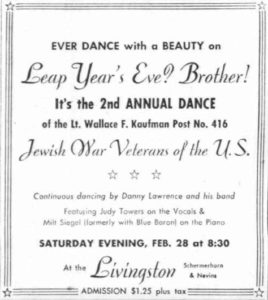
I’m not sure, but I guess that the Lt. Wallace F. Kaufman Post 416 Post no longer exists.
This past is not only a different time, it is a different place.
________________________________________
Though the fact that “May 4, 1945”, marking a point in time only four days from Second World War’s end in Europe (May 9 is an alternative date, as explained here and here) might suggest few-“er” casualties and therefore fewer names and events for “this” post, this is hardly so: Even if the war in Europe was concluding, the war with Japan continued; entirely unabated and with undiminished ferocity. And so, though most names presented below occur in the context of the Pacific Theater of war, names are also present for Jewish servicemen who were casualties in the European theater – even at this “late” date. And, along with the names of American Jewish soldiers, I’ve included the names of Jewish soldiers who were casualties while serving in the armed forces of other Allied nations (France, Poland, and the Soviet Union).
________________________________________
Yet, the ironic abundance of information pertaining to this date has eventuated in my creating – unlike my unusual practice – three separate posts: “this” post, for Army ground forces.
A second post, for other members of the Army Air Force.
And a third post, for the Marine Corps and Navy. But…! Due to the plethora of events and the abundance of information pertaining to May 4, 1945 in the Pacific Theater, that will be the lengthiest of this set of three posts, and will take a measure of time to complete. But, I hope to get it up and viewable eventually.
(Well, hey, my posts do tend to be on the longish side: The intentional antithesis of the ethos (is there an ethos, other than a gnostic interpretation of reality, such as here, here, and here) of those at the commanding heights (or plutonian depths?!) of the “tech elite” of the late 20th and early 21st centuries. Oh… Er… Uh.. I mean, y’know, Twitter and Facebook. (Gag.))
________________________________________
So, ground forces…
Friday, May 4, 1945
21 Iyyar 5705
______________________________
United States Army
Pacific Theater
Killed in Action
– .ת. נ. צ. ב. ה –
תהא נפשו צרורה בצרור החיים
Berman, Irvin Leslie, T/5, 20316073, Purple Heart, at Negros Island, Philippines
B Battery, 222nd Field Artillery Battalion, 40th Infantry Division
Born Philadelphia, Pa., 12/15/21
Mr. and Mrs. Israel L. and Melissa Berman [later Prestia] (parents), 2231 N. 8th St., Philadelphia, Pa.
Kenneth Lane Prestia (half-brother)
Manila American Cemetery, Manila, Philippines – Plot E, Row 3, Grave 22. Symbolic matzeva at Mount Sharon Cemetery, Springfield, Pa. (Section N), inscribed with date “5/5/45”
Casualty List 6/1/45
Jewish Exponent 6/8/45
Philadelphia Bulletin 6/2/45
American Jews in World War II – 511
Here’s an image of T/5 Berman’s matzeva at Mount Sharon Cemetery, in Springfield, Pennsylvania.
__________
Katz, Abraham (Avraham bar Mordechay HaCohen), PFC, 12042839, Silver Star, Purple Heart
A Company, 306th Infantry Regiment, 77th Infantry Division
(Previously wounded; approximately 9/1/44)
Born 6/26/21
Mr. Max Katz (father), 378 Pennsylvania Ave., Brooklyn, N.Y.
Wellwood Cemetery, Pinelawn, N.Y. – Section 3, Block 49, Row 2, Grave 4, Plot A-12, Society Jewish Postal Workers Welfare League of New York; Buried 2/27/49
Casualty Lists 11/1/44, 6/14/45
American Jews in World War II – 358
Via, FindAGrave.com, this image of PFC Katz’s matzeva is by Marie M. Bennett.
__________
Kletter, Benny, PFC, 32821733, Purple Heart, at Okinawa
A Company, 306th Infantry Regiment, 77th Infantry Division
Born Essen, Germany, 1/24/23
Mr. Louis Kletter (father), 1970 East 18th St., Brooklyn, N.Y.
34 Bond St., New York, N.Y.
Mount Hebron Cemetery, Flushing, N.Y. – Block 12, Reference 11, Section F, Line 30, Grave 5
Casualty List 6/26/45
American Jews in World War II – 364
__________
European Theater
Killed in Action
Perlis, Benjamin (Benyamin bar Yitzhak), Pvt., 42138962, Purple Heart
A Company, 324th Infantry Regiment, 44th Infantry Division
Born Brooklyn, N.Y., 6/28/26
Mr. and Mrs. Isidore and Ida Perlis (parents), 264 Rochester Ave., Brooklyn, N.Y.
Montefiore Cemetery, Springfield Gardens, N.Y. – Block 26, Row 008R, Grave 3, (Society: Graiever Young Men’s Benevolent); Buried 1/16/49
Casualty List 6/11/45
American Jews in World War II – 404
These two images – of Pvt. Perlis’ matzeva, and, his photographic portrait mounted thereon in ceramic – are by FindAGrave contributor Matt Flyfisher.
__________
Horowitz, Irving (Yitzhak bar Moshe), PFC, 32769169, Purple Heart, French Cross
Born 9/7/25
Mrs. Ida Horowitz (mother), 150 Governor St., Paterson, N.J.
Riverside Cemetery, Saddle Brook, N.J. – Map 165, Block O, Section 53, Society Anshe Leibowitz
Casualty Lists 5/24/45, 6/22/45
This image of PFC Horowitz’s extremely simple matzeva is by Mark Pollack, a contributor to FindAGrave.com.
__________
Summerfield, Norman Sylvan, Pvt., 34720133, Purple Heart, in Austria
L Company, 409th Infantry Regiment, 103rd Infantry Division
Born Memphis, Tn., 12/26/23
Mrs. Fannie Summerfield (mother), 1056 Linden St., Memphis, Tn.
Lorraine American Cemetery, St. Avold, France – Plot B, Row 24, Grave 1
American Jews in World War II – 568
__________
Continental United States
Died Non-Battle
Satloff, Herman (Hayyim bar Shlomo), Cpl., 33340623, at Camp Blanding Florida
Born Philadelphia, Pa., 6/13/21
Mrs. Nancy (Katz) Satloff (wife), Washington, D.C.
Mr. and Mrs. Samuel and Fannie Satloff (parents), 1704 West 65th Ave., Philadelphia, Pa.
Montefiore Cemetery, Jenkintown, Pa. – Section 12C, Lot 64, Grave 1
American Jews in World War II – Not Listed
________________________________________
Soviet Union
Red Army
РККА (Рабоче-крестьянская Красная армия)
Killed in Action
– .ת. נ. צ. ב. ה –
תהא נפשו צרורה בצרור החיים
Bukrinskiy, Mikhail Efimovich / Khaimovich [Букринский, Михаил Ефимович / Хаимович]
Junior Lieutenant [Младший Лейтенант]
SU-76 (Self-Propelled Gun) Commander (You can read more about the SU-76 – in English – at Wikipedia, while ru.Wikipedia’s coverage of the SU-76 includes production figures for the vehicle. Images and video of an SU-76 before, during, and after restoration can be viewed at Aregard (“Rear Guard”).)
1204th Self-Propelled Artillery Regiment, Northwestern Front
(Lightly wounded previously – on 8/24/44)
Born 8/17/23, city of Kiev, Ukraine
Mrs. Sofya Markovna Bukrinskiy (mother)
__________
Goldich, Ushar / Usher (Ushir) Ideleevich / Idelevich [Гольдич, Ушар / Ушер (Ушир) Иделеевич / Идельевич]
Junior Lieutenant [Младший Лейтенант]
Platoon Commander – Battery Operations
408th Mortar Regiment, 42nd Army
Born 3/23, Ukraine
Mr. Idel Pinkhovich Goldich (father)
Buried in Latvia
__________
Guterman, Petr Grigorevich [Гутерман, Петр Григорьевич]
Guards Lieutenant [Гвардии Лейтенант]
Chief – Chemical Services
158th Guards Artillery Regiment, 78th Guards Rifle Division
(Wounded previously – on 3/1/42, 5/22/42, and 5/21/43)
Born 1910, city of Pertikov, Belorussia
Mrs. Mariya Dubova Guterman (wife)
Buried in Benedorf, Germany
__________
Magaziner, Mikhail Davidovich [Магазинер, Михаил Давидович / Давыдович]
Lieutenant [Лейтенант]
Platoon Commander – Rifle Platoon
332nd Rifle Regiment, 241st Rifle Division
Born 1907, city of Berdichev, Ukraine
Mrs. Klara Eyzikovna Magaziner (wife)
Buried in Czechoslovakia
__________
Shulman, Ilya Abramovich [Шульман, Илья Абрамович]
Lieutenant [Лейтенант]
Headquarters Translator
1099th Rifle Regiment
(Wounded previously – on 8/15/43)
Born 1923
Mrs. R.I. Shulman (mother)
Buried in city of Tsibinka, Poland
__________
Vayner, Isaak Ilich [Вайнер, Исаак Ильич]
Senior Technician-Lieutenant [Старший Техник-Лейтенант]
Chief – Assistant Technical Department for Procurement
1531st Self-Propelled Artillery Regiment, 134th Rifle Corps, 2nd Belorussian Front
Born 11/9/19, city of Mariupol, Ukraine
________________________________________
Poland
Killed in Action
– .ת. נ. צ. ב. ה –
תהא נפשו צרורה בצרור החיים
Feder, Chaim, Pvt. (Operation Brand Berlin)
35th Infantry Regiment
Mr. Chylowys Feder (father?)
Jewish Military Casualties in the Polish Armies in World War II: I – Jewish Soldiers and Officers of the Polish People’s Army Killed and Missing in Action 1943-1945 – 85
Feldman, Leon, W/O
Born 1924
Mr. Sakowicz Feldman (father)
Jewish Military Casualties in the Polish Armies in World War II: I – Jewish Soldiers and Officers of the Polish People’s Army Killed and Missing in Action 1943-1945 – 20
Filhaber, Abram, Pvt. (Operation Brand Berlin)
35th Infantry Regiment
Mr. Szlomo Filhaber (father)
Jewish Military Casualties in the Polish Armies in World War II: I – Jewish Soldiers and Officers of the Polish People’s Army Killed and Missing in Action 1943-1945 – 85
Ginzberg, Wolf, Pvt. (at Kitten, Germany)
Intelligence Company, 7th Infantry Division
Born 1914, Lwow
Mr. Zacharia Ginzberg (father)
Jewish Military Casualties in the Polish Armies in World War II: I – Jewish Soldiers and Officers of the Polish People’s Army Killed and Missing in Action 1943-1945 – 24
Rejchman, Jozef, Cpl. (at Lieske, Germany)
25th Infantry Regiment
Born 1918; Zalesie, Lubelskie, Poland
Mr. Wladyslaw Rejchman (father)
Jewish Military Casualties in the Polish Armies in World War II: I – Jewish Soldiers and Officers of the Polish People’s Army Killed and Missing in Action 1943-1945 – 95
Sztern, Icek, Cpl. ((Operation Brand Berlin), Orianenberg, Brandenburg, Germany)
16th Infantry Regiment
Mr. Abraham Sztern (father)
Jewish Military Casualties in the Polish Armies in World War II: I – Jewish Soldiers and Officers of the Polish People’s Army Killed and Missing in Action 1943-1945 – 68
Sztynzak, Adam, Pvt.
35th Infantry Regiment
Mr. Hersz Sztynzak (father)
Jewish Military Casualties in the Polish Armies in World War II: I – Jewish Soldiers and Officers of the Polish People’s Army Killed and Missing in Action 1943-1945 – 98
________________________________________
Wounded in Action
United States
Pacific Theater
Cominsky, Joseph, PFC, 33177055, Purple Heart, at Okinawa
I Company, 307th Infantry Regiment, 77th Infantry Division
(Philadelphia Bulletin lists date as 5/5/45; Previously wounded on 7/26/44)
Born Philadelphia, Pa., 5/12/14
Mr. and Mrs. Robert and Fannie Cominsky (parents), 103 Roseberry St., Philadelphia, Pa.
Jewish Exponent 11/24/44
Philadelphia Record 11/1/44, 6/21/45, 6/22/45
Philadelphia Bulletin 6/21/45
Ours to Hold It High – 467
American Jews in World War II – 516
__________
Kushner, Jerry, PFC, 13127158, Purple Heart, at Okinawa
I Company, 306th Infantry Regiment, 77th Infantry Division
Born Philadelphia, Pa., 3/31/24
Mrs. Bessie Kushner [Zatlin] (mother), 5018 N. 10th St., Philadelphia, Pa.
Jewish Exponent 6/29/45
Philadelphia Inquirer 6/21/45
Philadelphia Record 6/22/45
Philadelphia Bulletin 6/21/45
Ours to Hold It High – 514
American Jews in World War II – 534
France
Europe
Armée de Terre
Tordjam, Jacques, Soldat de 2ème Classe, Croix de Guerre (at Baviere, gorges d’Inzell)
Regiment de Marche du Tchad
Had been severely wounded by several bullets in the body by assaulting strongly held emplacements. [A été grièvement blessé de plusieurs balles dans le corps en se jetant des emplacements fortement tenus.]
Livre d’Or et de Sang – 167
________________________________________
Here’s a reference..
Case File 48-0-26 / 48-44, Records Group 153, United States National Archives, College Park, Maryland, “Report of Investigation Division, Legal Section, GHQ, SCAP”, Inv. Div. No. 1349, Title: “Corporal Irving TOPP”. “Synopsis of Facts: Statements from Onose, Hamano, Doi, Ogaki and Watanabe set out. Witnesses report only one survivor from plane crash on 4 May 1945; execution of survivor, Lt. Kaufman, performed by order of Inoue; executor Katsuyama, believe to be still alive and in Japan.” (Includes interviews of Ichiro Onose (Intelligence Section of Inoue-Butai Headquarters, Babelthuap Island; Norio Doi, commander of forces stationed on Koror Island; Daiichi Ogaki)
Here are some books about history…
Behr, Edward, Hirohito – Behind the Myth, Villard Books (Random House), New York, N.Y., 1989
Bower, Tom, Blind Eye to Murder – Britain, America, and the Purging of Nazi Germany – A Pledge Betrayed, Granada Publishing Limited, London, England, 1981
Chiche, F., Livre d’Or et de Sang – Les Juifs au Combat: Citations 1939-1945 de Bir-Hakeim au Rhin et Danube, Edition Brith Israel, Tunis, Tunisie, 1946
Dublin, Louis I., and Kohs, Samuel C., American Jews in World War II – The Story of 550,000 Fighters for Freedom, The Dial Press, New York, N.Y., 1947
Herbert, Kevin, Maximum Effort: The B-29s Against Japan, Sunflower University Press, Manhattan, Ks., 1983
Meirtchak, Benjamin, Jewish Military Casualties in the Polish Armies in World War II: I – Jewish Soldiers and Officers of the Polish People’s Army Killed and Missing in Action 1943-1945, World Federation of Jewish Fighters Partisans and Camp Inmates: Association of Jewish War Veterans of the Polish Armies in Israel, Tel Aviv, Israel, 1994
Rogers, David H.; Sigler, Alvin L.; Wilcox, Charley F.; Martin, Briton; 494th Bombardment Group (H) Association, 494th Bombardment Group (H) History WWII: From Orlando, Wendover, Mountain Home, and Kauai to Corregidor, Zamboanga, Koror, Shanghai, and Hiroshima with the Liberators of Kelley’s Kobras and Back Home After All That, 494th Bombardment Group (H) Association, Annandale, MN (c/o E.R. Glazier, 135 E. Park St., Annandale 55302-0336), 1997
Rust, Kenn C., Seventh Air Force Story, Historical Aviation Album, Temple City, Ca., 1979
No specific author…
Ours To Hold It High: The History of the 77th Infantry Division in World War II, Infantry Press, Washington, D.C., 1947 (A very rich source of information, Ours to Hold It High, digitized by Oogle (isn’t everything, including “us”?!), can be accessed and downloaded via Archive.org.)
Here’s a book about gnosticism…
Voegelin, Eric, Science, Politics and Gnosticism, Regnery Gateway Inc., Chicago, Il., 1968



